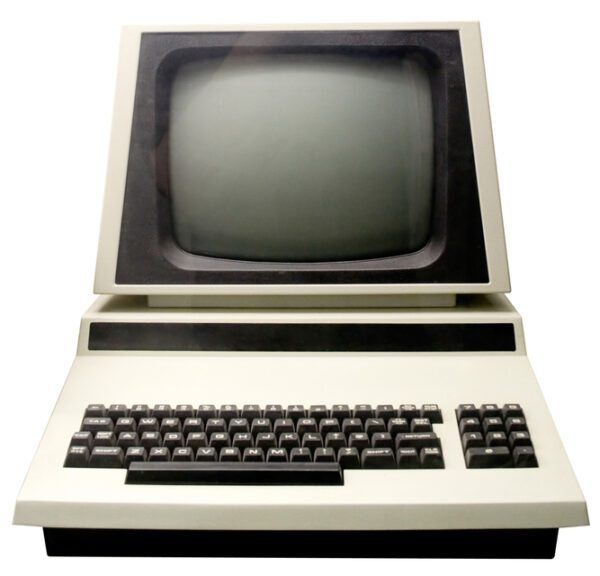
Though computerized maintenance management system (CMMS) software has a relatively short history compared to other business software, it has undergone major change through its life. Learning about the evolution of CMMS from an archaic, manual tracking system to a highly automated, internet-connected maintenance solution certainly gives maintenance professionals a better appreciation for CMMS software. This article provides a brief history of CMMS software.
A Brief History of CMMS
As one might expect, the evolution of computerized maintenance management systems follows the advancement of computers and their related technologies. The sections below look at the history of CMMS as defined by the technology available in different eras throughout the middle 1960’s to today.
The 1960s: Punch Cards
The first CMMS systems are almost unrecognizable by today’s standards. During the 1960’s, maintenance data was recorded using paper punch cards. Maintenance technicians or dedicated keypunch operators would create punch cards to represent work order data.
Punch cards were fed through a card reader hooked up to a mainframe computer, which would translate and store the data. Since each card could only hold a certain amount of information, a stack of cards was often required.
Due to the cost of hardware and operation, punch card-based systems were only of interest to large manufacturing companies that could afford it. In addition, punch cards could do little more than record basic work order information and send out reminders for recurring maintenance work. For many organizations, the return on investment (ROI) wasn’t enough.
The 1970s: Paper-based Maintenance Tracking
As the 1970s approached, maintenance tracking had moved away from punch cards to paper forms. Maintenance technicians would fill out paper work orders manually, and then hand them off to data entry clerks who would submit data to mainframe computers using minicomputer terminals. You may be surprised to learn that even with the modern CMMS systems available, many smaller organizations still operate in a similar fashion.
The 1980s: Adoption of Minicomputers

The use of minicomputers continued to grow into the 1980s. Unlike large, mainframe computers, minicomputers made CMMS more affordable and accessible to medium-sized organizations. CMMS features and functionality become more robust, and the green-screen interface empowered technicians to enter work order data.
The 1990s: Personal Computers and LAN
One of the biggest stages of CMMS evolution coincided with the widespread adoption of personal computers (PCs). No longer were specialists required to enter data through minicomputers – Microsoft Windows-based PCs allowed anyone to effectively use computers using a mouse and graphical user interface (GUI).
At the same time, rapid improvements in processing power, memory, and other technologies gave rise to more sophisticated software programs like spreadsheet and database management software. This enabled organizations to develop custom-built CMMS systems using applications like Microsoft Excel and Microsoft Access. While an improvement over paper-based systems, these homegrown solutions required continuous maintenance and had many limitations.
Further Reading: Pros and Cons of Different Work Order Management Systems
Also, local area networks (LAN) became more prevalent and allowed organizations to link computers together, providing shared access to printers, files, and data. This made maintenance data more accessible across the organization.
During this time, CMMS software was run on site using an organization’s own servers, and required ample IT resources to install, upgrade, troubleshoot, and maintain. Therefore, CMMS was still not feasible for organizations with little-to-no IT infrastructure.
The 2000s: Web-based CMMS
In the 2000s, as the Internet grew and daily use of the World Wide Web became the norm, vendors began to develop web-based CMMS applications. Unlike on-premise software that is run on an organization’s own servers, web-based software is installed and run on servers owned by the vendor. Web-based CMMS also shifted the responsibility of installation, upgrades, security, and data protection to vendors. This is what is referred to as the cloud or cloud computing.
Because web-based solutions greatly lowered the costs of hardware, software, and support service required for implementation, small organizations could finally adopt CMMS technology. The introduction of web-based CMMS also caused larger organizations to re-evaluate their IT infrastructure in order to increase efficiency and better manage upgrades. Many organizations made the switch from on-premise to web-based installations, freeing up their internal IT teams for other projects.
Web-based CMMS also provides the ability for users to access maintenance data from internet connected devices, such as laptops, tablets, and smartphones. This allowed technicians to become more productive by bringing data and the functionality of CMMS out into the field, instead of tethering employees to a home base.
Read Also: How to Choose Mobile Devices for Your Maintenance Team
Today: Connected Devices and the Internet of Things (IoT)

While internet-connected devices have been around for years in a consumer setting, it took many years before industry incorporated “smart” devices into the factory floor. Today, many large organizations leverage what’s known as the Industrial Internet of Things (IIOT), an internet-connected network of sensors, instruments, and applications that gather and share data with one another. This allows for a high degree of automation for failure detection, work order generation, data analysis, and reporting, and forms the basis of a maintenance strategy called predictive maintenance (PdM).
Make the Transition to FTMaintenance Select
Despite the rapid advancement of CMMS software, many organizations still rely on legacy CMMS systems. As organizations look to make maintenance operations more efficient and effective, they must invest in tools that give their maintenance teams the best chance to succeed. FTMaintenance Select is a robust, yet easy-to-use, CMMS platform for documenting, managing, and tracking maintenance activities. Request a demo of FTMaintenance Select today to learn more.
